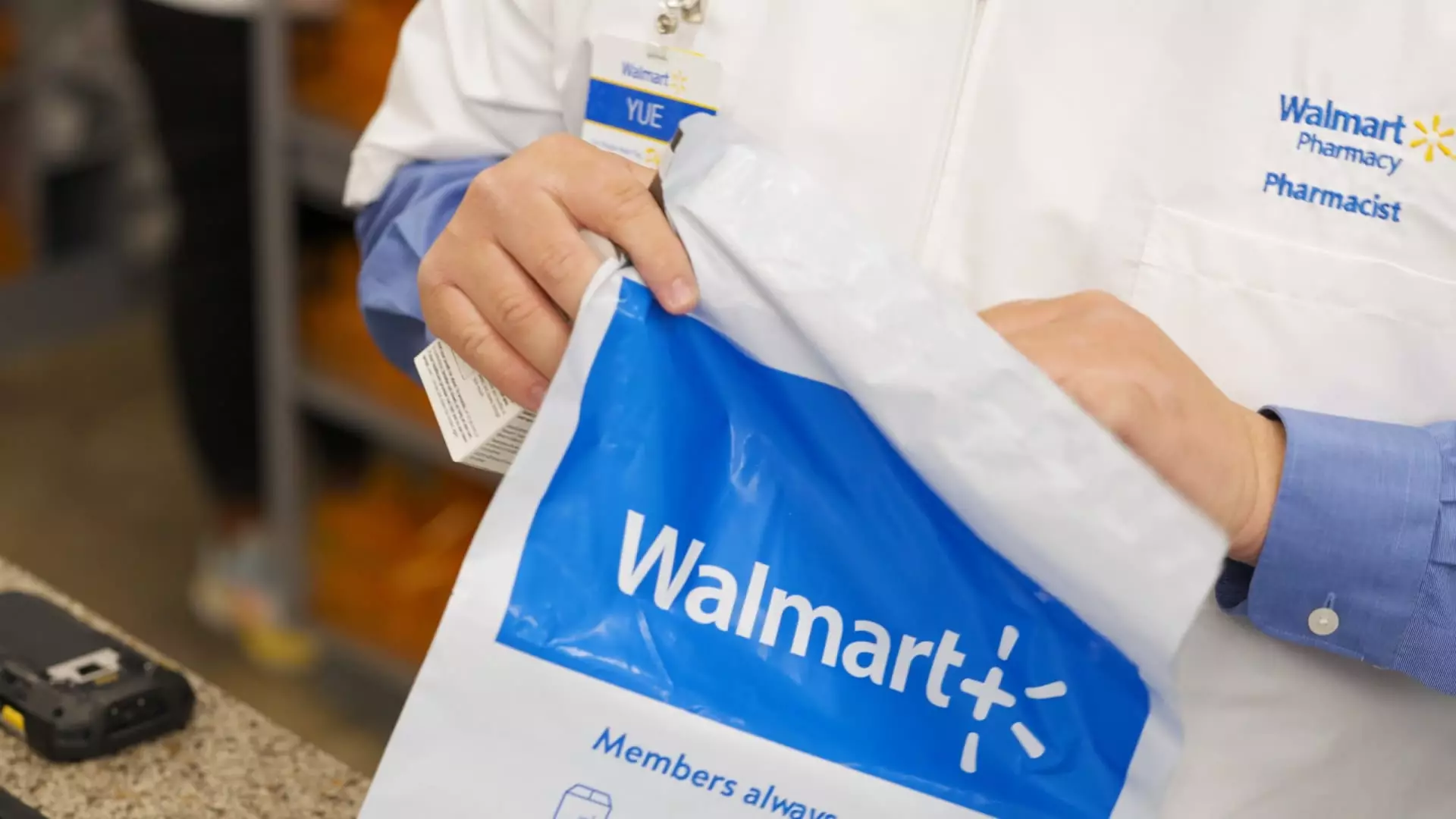The retail landscape is undergoing a significant transformation as major players like Walmart introduce innovative approaches to meet consumer demand amid shifting market dynamics. The recent announcement by Walmart to offer door-to-door prescription deliveries marks a pivotal moment in the ongoing rivalry with traditional pharmacy chains such as CVS and Walgreens, both of which are grappling with increasing challenges. This initiative not only aims to enhance customer convenience but is also a strategic move to capture a larger share of the health and wellness market as other companies struggle to maintain profitability.
Walmart has launched its prescription delivery service across six states—Arkansas, Missouri, New York, Nevada, South Carolina, and Wisconsin—with plans to expand to 49 states by the end of January. The company noted that North Dakota remains an exception due to existing state regulations that restrict such services. With this new capability, customers can have their medications delivered along with a selection of everyday items, providing an all-in-one shopping solution that reflects consumer desires for convenience and efficiency. The service’s price point, set at $9.95 per delivery while remaining free for Walmart+ members, aligns with the company’s competitive ethos, which combines affordability with accessibility.
Walmart’s entry into the prescription delivery arena is particularly consequential for drugstore giants like CVS and Walgreens, which have been facing declining stock values and profitability challenges. With changes in consumer behavior, many patrons are now more inclined to seek out retail giants that offer not only medications but a variety of products in one shipment. With over 60% of Walmart’s revenues coming from groceries, it’s clear that the company’s focus on health and wellness services is a strategic effort to diversify its offerings and bolster margins.
Despite Walmart’s entry, it remains to be seen how much market share the retailer will be able to capture from CVS and Walgreens, both of which already offer a robust suite of delivery options including same-day services. According to recent statistics, CVS dominates the market with more than 25% of the prescription drug revenue, while Walgreens holds close to 15%. For Walmart, starting with only 5% complicates its efforts to challenge these established brands. However, the upcoming healthcare initiatives indicate Walmart’s determination to build a more substantial presence in this lucrative sector.
The decision to roll out prescription deliveries was informed by substantial consumer demand. Tom Ward, the chief e-commerce officer for Walmart U.S., emphasized that this service was the most requested feature among customers, illustrating a clear market trend towards integrated grocery and pharmacy offerings. Moreover, Walmart aims to ensure safety during these deliveries by utilizing tamper-evident packaging and enabling real-time tracking of orders through its app and website. This approach is critical not only for operational efficiency but also for fostering consumer trust—essential in an industry where confidentiality and personal health are paramount.
Furthermore, new prescriptions that are delivered will require a consultation with pharmacists over the phone, addressing potential safety concerns and reinforcing Walmart’s commitment to a high standard of customer service in healthcare delivery.
Market Pressures and Future Prospects
As Walmart stakes its claim in the health and wellness arena, CVS and Walgreens face mounting pressures from market forces that threaten their traditional business models. Both chains are responding by implementing cost-cutting measures and scaling back operations, with CVS planning to close over 900 stores and Walgreens targeting 1,200. These actions reflect a broader struggle against declining reimbursement rates, inflation, and intensified competition from online giants like Amazon and mass retailers, creating hurdles for brick-and-mortar pharmacies to remain relevant.
Amidst the evolving landscape, Walmart continues exploring ways to leverage its low-cost business model by considering additional healthcare services, including medical clinics offering affordable health care solutions. This holistic approach positions Walmart not just as a retailer but as a potential healthcare provider, setting the stage for a new paradigm in the retail industry.
Walmart’s prescription delivery initiative highlights an urgent response to shifting consumer preferences that prioritize convenience and affordability. The evolving competition between traditional pharmacy chains and retail giants could very well redefine how consumers approach healthcare access in the future. As this dynamic continues to unfold, stakeholders are left to ponder the long-term implications for their businesses and the healthcare ecosystem at large.

